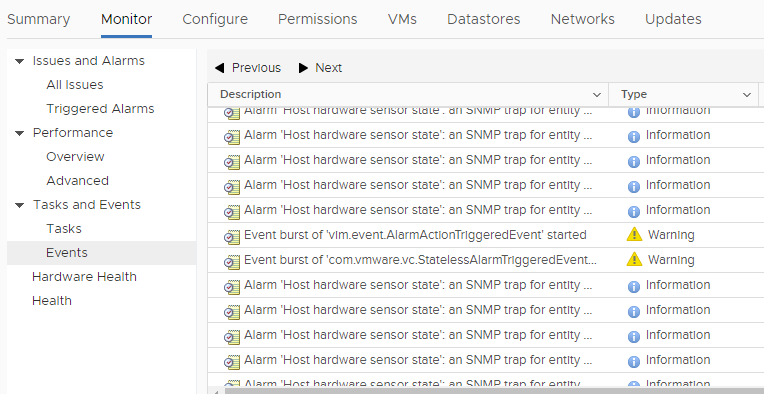

I just selected the Auto Deploy service and clicked Restart.
Setting up vcenter 6.5 email alerts manual#
Image Builder is stopped, but since it is a Manual service, it shouldn’t be much of an issue, but the Auto Deploy service seemed to be in a degraded state. So I connected to the VAMI ( and navigated to Services. That’s quite a helpful message, it even tells me what to try next. Try restarting the service to fix the issue.” “Managing depots is temporary unavailable. So first check the status of Auto Deploy (vSphere H5 client -> Menu -> Auto Deploy), and there we have an error message: This article does not apply to vSphere 6.0” “This article provides troubleshooting guidance on VMware Auto Deploy 5.x. The blog post points to VMware KB2000988. Something that is not used by the customer at this point, but is nevertheless enabled, and encountered some sort of error. Sure enough, VMPros already blogged about it. Not really sure what the issue could be, I just googled it. $AlertEmailRecipients = " greeted me this morning with a RBD Health Alarm. $vcenterusername = import-csv c:\scripts\vsphere60-alarms.csv


Not to simply take the script, I added additional functionality to it, to provide end to end configuration, including vCenter SMTP email server settings, as well as the ability to configure multiple vCenter servers in one fell swoop. I very much want people recognized for their hard work. If you stumble on this and know who originally made the similar script, please comment below. I found a good script about a year ago to do this with PowerCLI script using a CSV of the alarms. Introduction to PowerCLI Script to Configure vCenter Alarm Email Actions

Plus, vCenter contains many alerts, and many people do not know which ones you should configure for emails, and how critical each one is. While this provides granularity and customization opportunities, it creates a boring snoozefest, inviting confusion and human error in configuring them. You can also set repeated email actions on each alarm. On top of that, you configure each alarm with the email address(es) you want to be sent alerts. You really want to use a PowerCLI script to masnage vCenter alarm email actions!įor one, the action must be set individually on each alarm. Have you ever gone through your vCenter and configured alarms to email? If you have, you know that if anything ever screamed for automation within vSphere, it’s this, as it is extremely tedious.


 0 kommentar(er)
0 kommentar(er)
